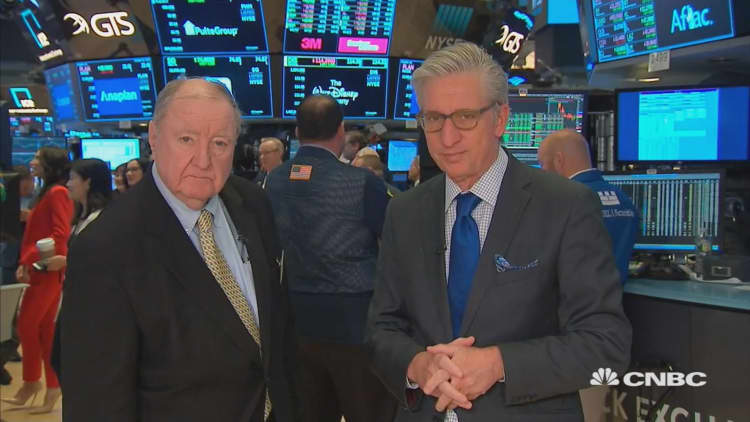A parade of strong fundamental news Tuesday helped the stock market forget the albatross of technical indicators that had been dragging things down.
Positive earnings reports and guidance coupled with another round of good economic news propelled the S&P 500 toward its best gain since April, helping ease what had been a rough two-week period.
The events reminded investors that for whatever other maladies are around — rising interest rates, a stronger dollar and geopolitical tensions among them — they're all happening against a healthy background of surging corporate profits and a healthy base of economic strength.
"You step back and say, 'What does the environment look like and how do we judge that things have calmed down?' All that's important," said Art Hogan, chief investment strategist at B. Riley FBR. "We can have a reaction function that is intuitive to the news we get."

For weary market participants, the news helped assuage some very particular fears.
UnitedHealth beat earnings expectations and raised guidance. Ditto for Johnson & Johnson, which beat on the top and bottom lines, sending shares higher for the two Dow components and calming some worries that corporate executives broadly might be shifting guidance lower in the face of a global tariff battle, higher borrowing costs and rising currency pressures.
At the same time, industrial production numbers in the U.S. topped estimates and job openings hit a new record. Fund managers responding to a Bank of America Merrill Lynch survey indicated hopes for U.S. growth as compared to the rest of the world are at an 11-year high.
All of that happened while Italy's government bond yields dropped sharply amid an apparent budget deal, the U.S. dollar briefly hit a three-week low before bouncing back, and U.S. Treasury yields, the source of much of the market's recent consternation, rose with the stock market, increasing amid signs of economic strength rather than inflation fears.
"The market was pricing in an economic slowdown. I don't think that's happening," Hogan said. "The key to market success will be how we react to [earnings] guidance. That reaction function's going to be tricky."
Indeed, the path ahead does not appear smooth.
Wall Street is watching corporate guidance closely, with early indications that concerns would center around how much tariffs would impact business and what the implications of currency fluctuations will be.
Despite Tuesday's rally, the mood remains cautious.
"What's really happening is a continued separation of the haves and the have nots," said Mitchell Goldberg, president of ClientFirst Strategy. "You're going to see companies that show decent numbers go higher. They're going to continue to attract investors. The have-not companies not living up to expectations, that can't show organic growth, they're going to continue to lag."
Tuesday's early action helped exemplify the market divide: While breadth at the New York Stock Exchange was strongly positive, with advancers beating decliners about 5 to 1, companies setting new lows beat those setting new highs by 10 to 1.
So while Wall Street could take comfort in a big day, there remains work to be done before the all-clear comes in the market. Hogan said how well technical indicators like how the reacts around its 200-day moving average will be a test for how strong fundamentals are.
"In the near term, I would rather face the onslaught of earnings and subdued guidance sitting at support than sitting at resistance," he said. Hogan described the current situation as "very precarious."


